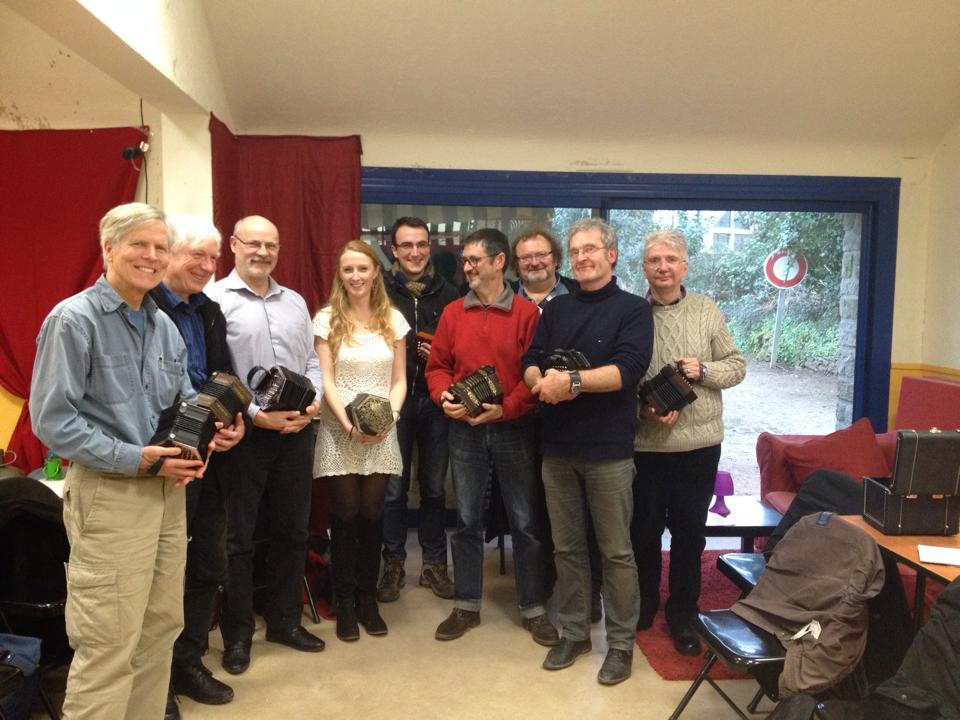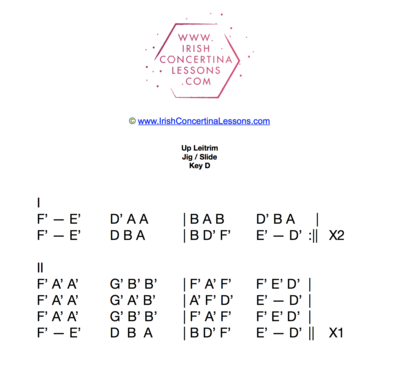READING ABC NOTATION IN IRISH TRADITIONAL MUSIC


When you go to workshops, summer schools, camps, etc, a lot of the teachers will choose this method of notation (ABC) when teaching the class. Some others will teach only by ear, and others may have staff notation to give you (the dots).
This ABC method is convenient as it can be quickly written on a board and into a notepad.
It’d be useful for you to be able to follow this method of notation if you plan on going to workshops and camps, etc.
I highly recommend attending these camps and workshops, etc if you can.
There are many in Ireland, plenty in the USA and I’ve taught at more around mainland Europe and Australia.
There is a lot to be gained from these new learning environments from visiting tutors and from other concertina learners you meet in the class and in sessions.

To know when starting to read ABC notation:
-
C sharp and F sharp are notated with a hash key C# F#
-
C natural (middle C) and F natural are notated with a natural sign C♮ F♮
-
Take note of the dashes (,’) used to signify low and high notes here below.

Here you can see how the dashes work to show low and high notes.
This list of notes starts down at low G (G,) and climbs all the way up, finishing at High C (C’):


Also found in ABC notation:
Lines — and | Bar Lines |
Line —
This means ‘long note’, aka: dash or hyphen.
Example 1:
In the common slip jig, A Fig for a Kiss, you will see in the first line:

This means there is a long G followed by a short B followed by a long E.
Each of these long notes are the length of two short notes, ie:

But you don’t play out the individual notes as notated here.
You hold the first two G’s as one long G, then play a short B, then hold the two E’s as one long E…
TIP:
To hear how long you should hold the notes for, I recommend listening to the audio track and getting the melody into your head.
Always better to learn Irish traditional music by ear, if you can.
Example 2:
In the reel, The Primrose Lass, the first line is notated like this:

Here we play a long B followed by a short A, followed by a long G.
The long B is the length of three B’s and the long G is the length of three G’s, like this:

But, as in the slip jig above, don’t play the individual B’s or G’s like this.
Instead, hold down the three B’s as one long B. Then play a short A. And then hold down the three G’s as one long G, followed by a short E.
Again - I recommend learning this by hearing it, rather than reading it. Both of these tunes are available in the Starter Course.
| Bar Lines |
Bar lines ( | ) are used to separate bars in an Irish tune.
If you’re new to ABC notation, it’s useful to know that the ‘beat’ (where you tap your foot or clap along) falls on the first note after each bar line.
Each bar must have the same value of notes in it, whether that is made up of individual single notes, or notes with lines/dashes (with the lines/dashes signifying the long notes).
As an example, here is the 1st part of Joe Bann’s barndance:

Here we can clearly identify the notes that are on the beat, as they are the first notes after each bar line. I’ve highlighted them here in green. These are the notes you tap your. foot or clap along.
In most tunes in Irish traditional music, there are 8 bars in each part.
1st part (sometimes called the ‘A’ part) = 8 bars
2nd part (sometime called the ‘B’ part) = 8 bars
etc.

© www.IrishConcertinaLessons.com